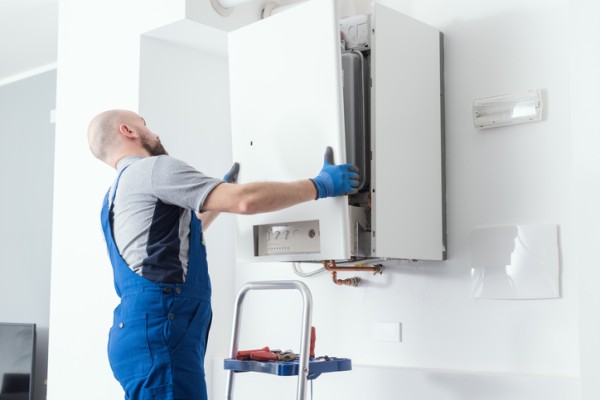
Choosing the right hot water system is one of the most important decisions when building or renovating a home. It impacts your household energy use, comfort, running costs and carbon footprint. With a wide range of technologies available, from traditional electric storage tanks to heat pumps and solar systems, knowing what suits your home, climate and budget is key.
Here’s what to consider when selecting the best hot water system for your household.
Understand the different system types
There are five main hot water system types used across Australia:
- Electric storage systems: These heat and store water in a tank. While low in upfront cost, they tend to be the most expensive to run and are being phased out in some regions unless paired with solar PV.
- Gas systems: Available as continuous flow (instantaneous) or storage tanks, gas systems are efficient in areas with natural gas supply. They provide fast hot water but contribute to greenhouse emissions.
- Solar hot water systems: These use rooftop solar collectors with a gas or electric booster. They offer long-term energy savings and reduced emissions, particularly in sunny climates.
- Heat pump systems: These extract heat from the air and use it to heat water. They’re highly efficient and ideal for homes with rooftop solar, though initial costs are higher.
- Instantaneous electric systems: These deliver hot water on demand without storage. They’re compact and efficient for small households but may require upgraded electrical supply.
Consider your energy source
Start by identifying which energy sources are available:
- Natural gas is ideal for continuous flow or gas-boosted solar systems.
- No gas access? Opt for electric systems—especially heat pumps or solar-boosted options if you already have rooftop solar.
- Have solar PV? A heat pump or electric storage system can use excess solar power, reducing running costs.
Size it for your household
Choosing the right size system ensures hot water is always available without unnecessary energy use.
- Households of 1–2 people: 90–160 litre tank or small instantaneous system
- Households of 3–4 people: 160–300 litre tank or mid-size heat pump
- Households of 5+ people: 300–400 litre tank or large capacity system
Also consider distance from the system to the taps. Long pipe runs can waste water and delay delivery—some homes benefit from multiple smaller units or recirculating systems.
Compare upfront vs running costs
- Electric tanks are the cheapest to install but the most expensive to run.
- Gas systems cost more upfront but offer moderate long-term savings.
- Heat pumps and solar systems have higher installation costs but significantly lower running costs over time.
- Rebates in many states can offset the cost of installing energy-efficient systems, especially heat pumps and solar.
Match the system to your climate
- Hot, sunny areas (QLD, NT, WA) are perfect for solar hot water.
- Cooler regions (TAS, VIC, southern NSW) benefit more from heat pumps or efficient gas systems, as solar performance may vary seasonally.
- Heat pumps are effective across most climates, but performance may be reduced in sub-zero conditions.
Check rebates and incentives
Government incentives can significantly reduce the cost of eligible systems:
- Heat pump rebates are available in many states, with some offering up to $540 off the upfront cost.
- Solar hot water systems may qualify for Small-scale Technology Certificates (STCs) and state-specific rebates.
- Check the latest schemes in your state or territory before purchasing.
Think long-term efficiency
- Heat pumps can reduce running costs by 60–80% and up to 90% when paired with solar PV.
- Solar hot water systems reduce both energy use and emissions, though they depend on sunlight and may need boosting in winter.
- Modern gas systems are efficient but still rely on fossil fuels.
- Electric storage systems are convenient but costly to run unless integrated with rooftop solar.
Don’t forget installation and maintenance
- Always use a licensed plumber or technician who complies with Australian Standards (AS/NZS 3500).
- Look for systems with at least 5–7 years warranty on tanks and parts.
- Schedule regular maintenance, especially on tanks (e.g. replacing sacrificial anodes) to extend system life.
- Ensure proper roof orientation and structural support if installing solar hot water collectors.
What system is right for you?
| System type | Upfront cost | Running cost | Best suited for |
|---|---|---|---|
| Electric storage | Low | High | Small budgets, rental properties |
| Gas (instant/storage) | Moderate | Moderate | Homes with gas access |
| Solar hot water | High | Low | Sunny regions, sustainability-focused |
| Heat pump | High | Very low | Homes with solar PV, energy efficiency |
| Instant electric | Moderate | Low-moderate | Small households, limited space |
Final tips
- Get multiple quotes, including lifetime cost estimates, not just installation.
- Ask about smart controllers or timers to run systems during off-peak or solar sponge periods.
- If sustainability is a top priority, a heat pump or solar system is the most efficient long-term option.
- Plan ahead during renovations or new builds, integrating the right hot water system early can save thousands later.





